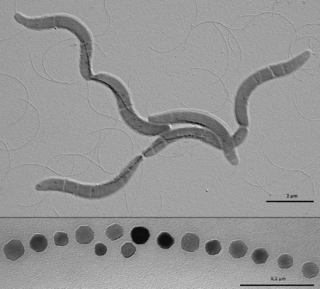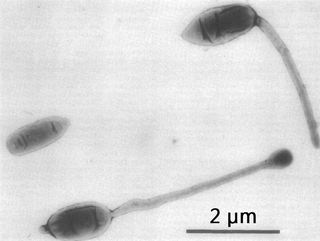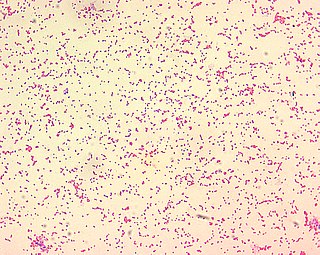| Sphingomonadales | |
|---|---|
| Scientific classification | |
| Domain: | Bacteria |
| Phylum: | Pseudomonadota |
| Class: | Alphaproteobacteria |
| Order: | Sphingomonadales Yabuuchi and Kosako 2006 [1] |
| Families [2] | |
| |
The Sphingomonadales are an order of the Alphaproteobacteria. [1]
| Sphingomonadales | |
|---|---|
| Scientific classification | |
| Domain: | Bacteria |
| Phylum: | Pseudomonadota |
| Class: | Alphaproteobacteria |
| Order: | Sphingomonadales Yabuuchi and Kosako 2006 [1] |
| Families [2] | |
| |
The Sphingomonadales are an order of the Alphaproteobacteria. [1]
The currently accepted taxonomy is based on the List of Prokaryotic names with Standing in Nomenclature [2] and the phylogeny is based on whole-genome sequences. [3]
| |||||||||||||||||||||||||

The Rhodospirillales are an order of Pseudomonadota.
The Phyllobacteriaceae are a family of bacteria. The most common genus is Mesorhizobium which contains some of the rhizobia species.
The Aurantimonadaceae are a small family of marine bacteria.

The Hyphomicrobiaceae are a family of bacteria. Among others, they include Rhodomicrobium, a genus of purple bacteria.

The Brucellaceae are a family of the Gram-negative Hyphomicrobiales. They are named after Sir David Bruce, a Scottish microbiologist. They are aerobic chemoorganotrophes. The family comprises pathogen and soil bacteria

Desulfovibrionales are a taxonomic order of bacteria belonging to the phylum Thermodesulfobacteriota, with four families. They are Gram-negative. The majority are sulfate-reducing, with the exception of Lawsonia and Bilophila. All members of this order are obligately anaerobic. Most species are mesophilic, but some are moderate thermophiles.
The Syntrophobacterales are an order of Thermodesulfobacteriota. All genera are strictly anaerobic. Many of the family Syntrophobacteraceae are sulfate-reducing. Some species are motile by using one polar flagellum.

Alphaproteobacteria is a class of bacteria in the phylum Pseudomonadota. The Magnetococcales and Mariprofundales are considered basal or sister to the Alphaproteobacteria. The Alphaproteobacteria are highly diverse and possess few commonalities, but nevertheless share a common ancestor. Like all Proteobacteria, its members are gram-negative and some of its intracellular parasitic members lack peptidoglycan and are consequently gram variable.
The Nitrobacteraceae are a family of gram-negative, aerobic bacteria. They include plant-associated bacteria such as Bradyrhizobium, a genus of rhizobia associated with some legumes. It also contains animal-associated bacteria such as Afipia felis, formerly thought to cause cat-scratch disease. Others are free-living, such as Rhodopseudomonas, a purple bacterium found in marine water and soils. The strain Rhodopseudomonas palustris DX-1 can generate an electric current with no hydrogen production, a trait being explored in the development of the microbial fuel cell. The genus Afipia has also been found in the atmosphere, where it uses methylsulfonylmethane as a carbon source.
Rhodopseudomonas is a genus of bacteria from the family Nitrobacteraceae.
Erythrobacteraceae is a bacterium family in the order of Sphingomonadales.
Pleomorphomonas is a genus of bacteria from the order Hyphomicrobiales.
Devosiaceae is a family of Alphaproteobacteria.
Stappiaceae is a family of Alphaproteobacteria.
Tepidamorphaceae is a family of Alphaproteobacteria.
Pleomorphomonadaceae is a family of Alphaproteobacteria.
Parvibaculaceae is a family of Alphaproteobacteria.
The Sphingosinicellaceae are a family of the Sphingomonadales.
The Stellaceae are a family of bacteria from the order Rhodospirillales.
The Azospirillaceae are a family of bacteria from the order Rhodospirillales.